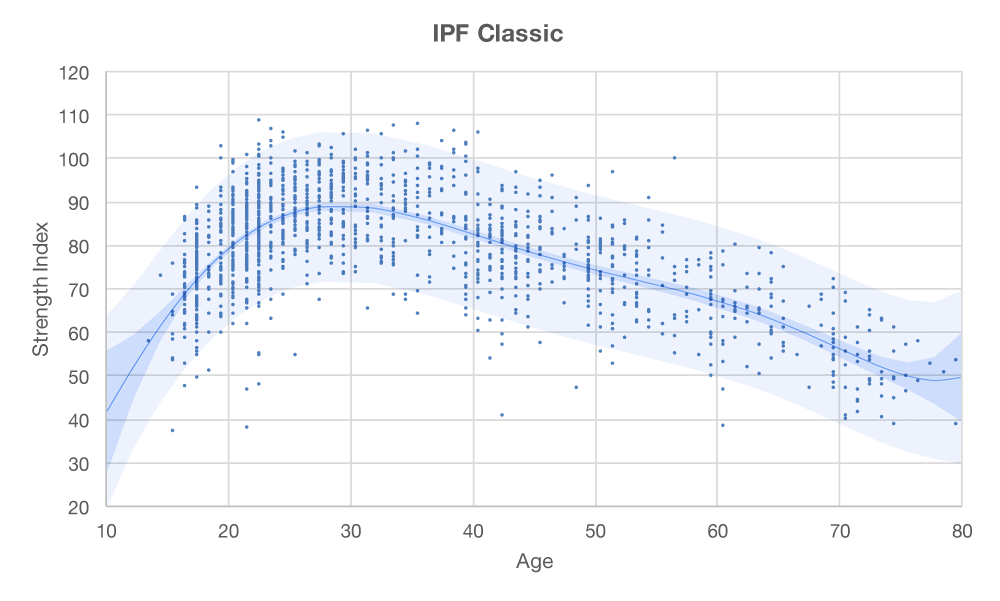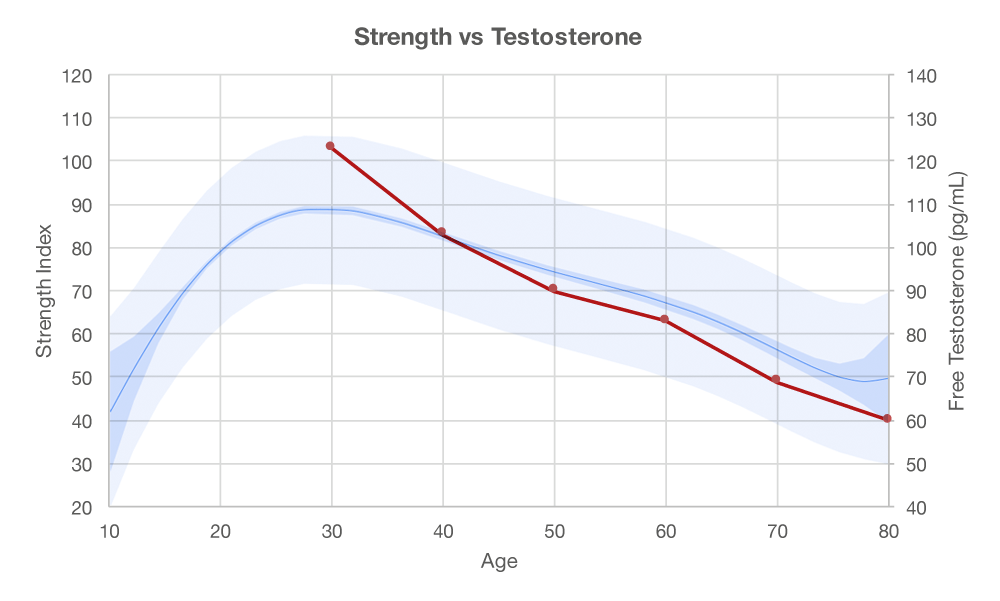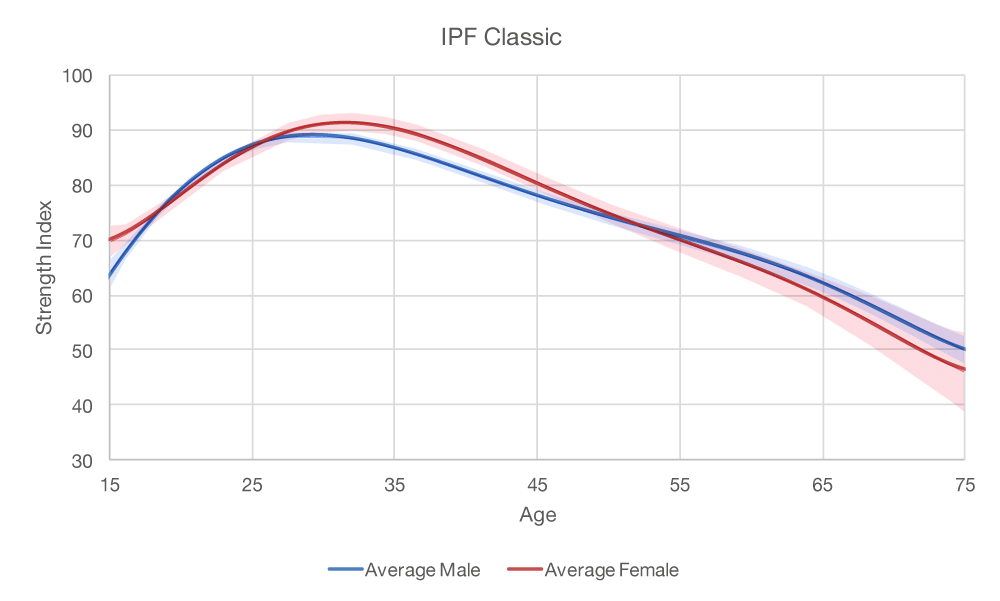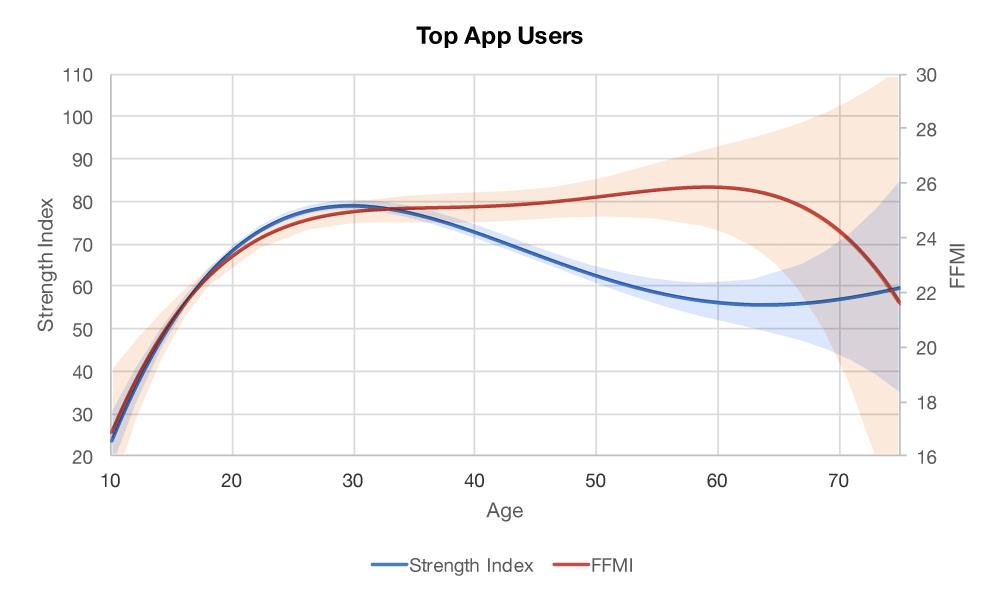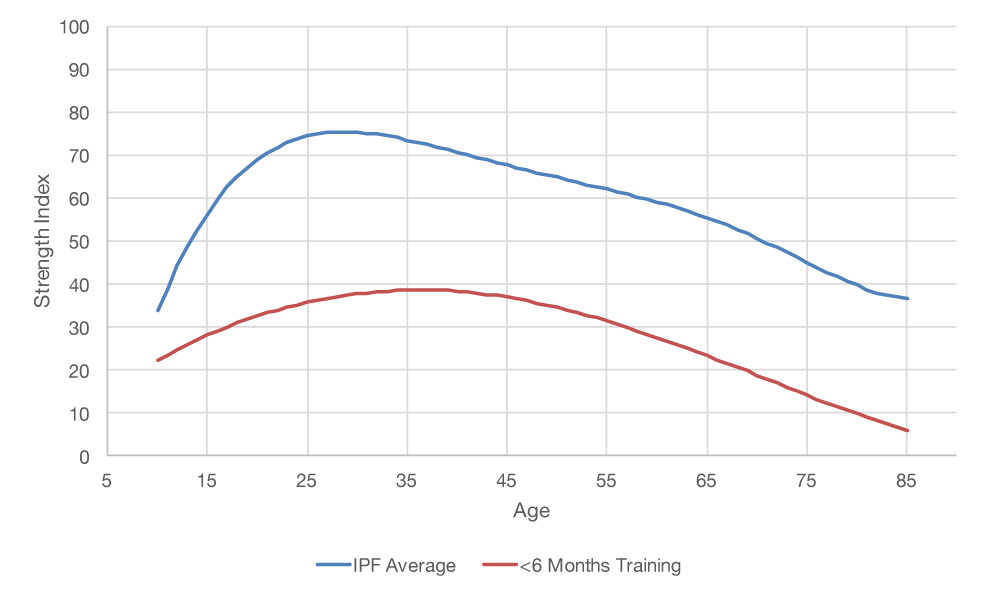Age and Strength
What should you expect as an aging lifter? The conventional wisdom is that your strength will decline as you age. Never the less, there are plenty of people who are the strongest they’ve ever been and are far from their 20’s.
To get an idea how age affects strength, we’re going to skip the laboratory studies and go straight to the field, more specifically — the competition platform. Enter the International Powerlifting Federation. It’s a fair assumption that participants were healthy and motivated at the time. Furthermore, elaborate rules and strict monitoring of the competitions ensures a well-controlled environment. We’ll use this data to minimize confounding factors as much as is possible.
Feild vs Laboratory Data
| IPF Competition Data | Laboratory Studies |
|---|---|
| Large sample size | Small sample size |
| Extensive training experience | Limited training experience |
| Highly motivated to perform | Average motivation to perform |
| Precise timing of peak performance | Ordinary performance |
Without further delay, let’s look at the data.
You’re looking at male IPF lifters here (n=1513) who have competed where the squat, bench press, and deadlift were performed. Age accounts for 46% of the variation in strength (shown here) and increases up to 83% for the top 16% in the IPF (not shown). The data shows a clear linear decrease in strength with advancing age starting from around 30 years old.
Could that strength decrease have anything to do with a concurrent decrease in circulating free testosterone that also occurs with aging? Let’s take a look.
It certainly looks like there might be a relation there. Data is not available (source) for decades before 30 but we’d expect there to be an increase from 10 years old that parallels the increase in strength.
Proposition: Strength is proportional to circulating testosterone concentration. The loss of strength with advancing age is, therefore, a product of lower testosterone.
Before you run out and get on TRT, there’s something else that we can look at. If decreasing free testosterone is to blame for a decrease in strength after 30 years old, there should be some gender differences in strength loss since there is a pronounced difference in testosterone concentrations between the sexes. That being the case, we’d expect to see some gender differences in the loss of strength.
It turns out there isn’t much gender difference. There is, however, a bit more variation among female lifters. That and there are a few exceptionally strong lifters between 30-40 years old who manage to pull the curve up. Exclude this handful of super strong ladies and there is essentially zero gender difference in loss of strength with age.
Proposition: Strength is proportional to circulating testosterone concentration. The loss of strength with advancing age is, therefore, a product of lower testosterone.
Okay, well surely testosterone has something to do with it, right? We know it builds muscle mass and we know more muscle can mean more strength. Conversely, less testosterone equals less muscle mass and therefore less strength. Sounds legit but we better check on that. It’s rather common for our assumptions to turn out to be false.
Since we don’t have access to the fat-free mass data of IPF competitors, we’re going to look at app users instead. We’ll pull only users who are strength equivalent to the IPF sample so we can make a direct comparison. More specifically, we’re going to examine users who are within 2 standard deviations from the IPF average.
The data gets a little sparse after 55 years old so we can’t say much beyond that point. Otherwise, IPF equivalent app users appear to follow the same progression of strength over the years. What’s most surprising, however, is that fat-free mass does not decrease after 30 as we’d expect it to knowing that testosterone is also on the decline. Age accounts for ~19% of the overall variation in FFMI. Yet from 25-50, there is almost no association between age and FFMI.
Additionally, there is a 0.93% increase in average body fat per decade from 15-50 for the same dataset, which will contribute to but is not enough to account for most of the decrease in strength.
Good news — continuing to lift weights as you age can result in a retention of muscle mass despite a decrease in strength.
So now you’re really curious what’s causing the loss of strength. Anton, Spirduso, and Tanaka (2004) suggested the loss may be due to a decrease in neuromuscular function. What they mean by that is advancing age causes you to coordinate the movements and muscular forces operating across muscle groups a little less efficiently over time. The authors drew this conclusion after comparing the differences in loss of strength between weightlifting and powerlifting. In weightlifting, where the lifts are highly technical, strength decreased much more rapidly than in powerlifting.
Practical Recommendations
Use a variety of variations of the main movements. Using the bench press as an example, try supplmenting your normal bench routine with incline and decline variations, wide/medium/narrow/reverse grips, dumbbells, flat/arched back, chains/bands, and so on. The variation has been shown to benefit those learning the lifts and may also help those losing neuromuscular function.
It’s not all bad news, though
Now that we’ve dug into app data a little bit and pulled out the IPF equivalent lifters, let’s take a look at lifters at the very beginning of their weight training careers however old they are when they start. Yes, we’re going to look at beginner strength levels over time in comparison to dedicated lifters.
Once again, we see the by now familiar decrease in strength also show up in beginners. Perhaps not surprisingly, there is a lot more variation in the strength of beginners. While the trend for beginners is significant, only 2% of the variation is explained by age. That means if you are just starting out lifting — or thinking about it — that age is not a factor. To summarize this:
Dependence of Strength on Age
| Population | Variatation Explained |
|---|---|
| Beginners | 2% |
| IPF Average | 46% |
| IPF Top 16% | 83% |
The top lifters in the IPF can use age as an explanatory factor, beginners can not. But if you’re a top lifter what really needs to be any explained anyway? Bottom line — if you haven’t started yet, do it!
Besides that, notice the gap between beginners and the average IPF lifter. That’s your room for growth. Let’s plot that out real quick.
It appears you truly can make significant gains at any age. That person who says that at 55 years old they are stronger than they have ever been is telling the truth. They might even be stronger at 60 than they were at 55.
Note: The small secondary bump at around 65 is probably just an artifact of the calculations.
If you really want some more motivation to pick up the barbell, check this out. Let’s bring the IPF data back for a minute. This time we’ll look only at people who placed 1st in a competition.
The strength index used here is a little different than the Wilks coefficient used in powerlifting in that it incorporates age, in addition to gender and body weight. Overall, it gives near zero bias between weight classes and age classes, unlike Wilks. One score can rank everyone — from juniors to masters (more about that later). So who is the champion of champions?
David “Superman” Ricks stands higher than anyone else. At 57 years old he set a world record for the squat in the 93kg weight class, one of the most competitive classes to be in.
Comment on Facebook
This page uses data from the OpenPowerlifting project. Many thanks to them for the work they do.

